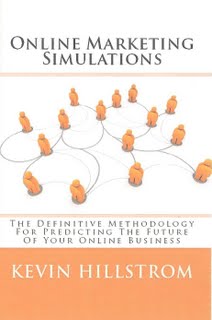Subtle Differences
 Buy the book on Amazon.com, or buy the Kindle version here!
Buy the book on Amazon.com, or buy the Kindle version here!Time to open up your spreadsheets! (e-mail if you would like a copy).
Ok, enter the value "0.00" into cells C6 - G6. Next, enter the value "0.00" into cells B101 - B340. Finally, enter "1,000" into cell B189.
Next year, we'll retain 38.4% of these customers (cell C11). These customers will order 1.49 times (cell C16), buying 2.47 items per order (cell C17), paying $48.02 per item (cell C18). Notice that as time goes by, these customers become more loyal, buying more expensive items. By the end of year five, these customers are purchasing $83.00 items.
Now, enter "0.00" into cell B189. Enter "1,000" into cell B190.
Next year, we'll retain 36.8% of these customers (cell C11). So basically, these customers are very similar to the customers outlined earlier. However, these customers will order 1.6 times next year, buying 3.0 items per order, paying $40.89 per item.
In other words, these customers are subtly different --- about the same repurchase rate, but buying more items per order, and buying cheaper items as well.
Over time, these customers also buy more expensive items, but only spend $71.89 per item by year five. But notice that these customers are worth more in year five than the customers in the first segment (spending $77,000 in year five, vs. $57,000 in the other segment).
There are such subtle differences between customers in the businesses we manage. Our dashboards and reports suggest similarities. Over time, similar customers with subtle differences in purchase behavior diverge, becoming fundamentally different customers. When we optimize our business for short-term results, we miss out on the things that cause us to have a healthy business in the long-term.
Labels: OMS, Online Marketing Simulation
0 Comments:
Post a Comment
Links to this post:
Create a Link
<< Home